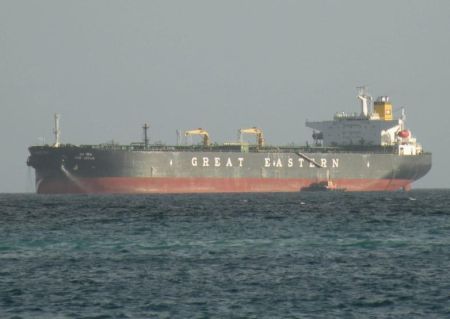
The Board of Directors of the Great Eastern Shipping Company Ltd. (G E Shipping) today approved the Audited Results for the financial year ended 31 st March 2013.
With respect to sale and purchase activities during the fourth quarter of the 2012-13 fiscal year the Company sold and delivered its 1995 built Panama x dry bulk carrier ‘Jag Arnav’ to the buyers and contracted to sell its 1988 built Genera l Purpose (GP) product carrier ‘Jag Parwar’ with delivery in Q1FY14.
Subsequent to the quarter the Company delivered its 1988 built General Purpose (GP) product carrier ‘Jag Parwar’ to the buyers and contracted to sell its 1999 built Aframax crude carrier ‘Jag Leela’ with delivery in Q1FY14.
The crude tanker market continued to underperform in Q4FY13. Subdued demand from the western economies and seasonal refinery maintenance added to tonnage oversupply reflected in lower earnings.
The product tanker market echoed showed some strength on back of robust demand of distillate cargoes from US to South American countries. Steady product demand from Asia also resulted in healthy cargo movement and utilization. But any meaningful rise in the charter rates was capped by new addition of vessels in the market. The charter rates for large asset classes in the dry bulk sector remained depressed throughout the quarter mainly due to lower iron ore imports from Brazil to Asia and lower coal shipments from Australia due to heavy floods. Improvement in the grains exports especially from South America supported utilization levels of smaller asset classes. Even though substantial scrapping of vessels was witnessed, the issue of new supply overhang loomed over the freight rates.
On the other hand, when it comes to the outlook for the tanker market, the International Energy Agency (IEA ) expects oil demand growth to remain muted for 2013 (0.9% to 90.6 mb/d) on the back of the unstable European environment, US govt. spending cuts and weakening of commodity demand from China. As anticipated, structural changes in the trade patterns have already started showing their impact on the tanker industry.
With US turning net exporter of refined products, the product tanker segment is expected to perform relatively better than the crude segment in the coming years. But a recent boom in ordering of new product tankers can negate a significant improvement in the charter rates going forward.
Dry Bulk Market
China is likely to continue to focus on large scale infrastructure development to achieve desired economic growth. India is also expected to step up its coal imports to fire its mega power projects in the medium term. All these factors reflect a steady demand growth for the major bulk commodities. As a result of the difficult operating environment, scrapping activities have increased and close to 7.5mn dwt of dry bulk vessels got scrapped in Q1CY13. But looking at the current supply issues, the industry requires massive scrapping to shorten the demand supply mismatch.
The revenue visibility for the balance part of FY 2013-14 is around Rs.381 crores. Crude tankers and product carriers (incl. Gas) are covered to the extent of around 42% and 56% of their operating days respectively.
In case of dry bulk carriers, they are covered to the extent of around 26% of the fleet’s operating days.
During the quarter Greatship Global Offshore Services Pte. Ltd., a subsidiary of GIL took delivery of a Platform/ROV Support Vessel, “Greatship Ragini” from Colombo Dockyard Plc, Sri Lanka. Greatship Global Energy Services Pte. Ltd., a subsidiary of GIL took delivery of a mobile offshore self elevating drilling rig, Le Tourneau 116(E) – ‘Greatdrill Chaaya’ from Lamprell Energy Ltd, UAE.
In the fourth quarter of the 2013 fiscal year, oil prices witnessed volatility within a range. However subsequent to the end of the quarter oil prices along with other commodities corrected sharply. Disappointing economic data from US, EU and China has created some doubts on the demand sustainability and therefore on the price of oil.
Demand for offshore support and drilling services has remained reasonably strong over the last few years, with oil prices still well above the threshold for E & P profitability. However, with the wave of new building deliveries expected primarily from yards located in South East Asia and China, excessive capacity addition in the coming years could cause some concern on utilizations and rates going forward.
The revenue visibility for the balance part of FY 2013-14 is around Rs.1,108 crores. PSVs and AHTSVs are covered to the extent of around 43% and 57% of their operating days respectively. ROVSVs and MPSSVs have coverage of around 67% and 70% for the balance part of FY2014. In case of Jackup rigs, they are covered to the extent of 86% of the operating days.
We use cookies to improve your experience. By continuing to use our site, you accept our Cookies, Privacy Policy,Terms and Conditions. Close X